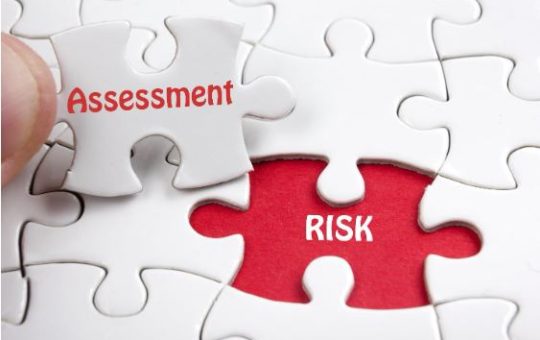
Risk Assessment Level-2
Course Overview
The Risk Assessment Level-2 course builds on foundational risk assessment knowledge, providing participants with advanced techniques and tools for comprehensive risk management. This course is ideal for individuals who have completed Level-1 training or possess basic risk assessment skills and want to deepen their expertise. It emphasizes systematic approaches to identifying, evaluating, and mitigating workplace risks, aligning with international safety standards.
Benefits
- Enhanced Risk Management Skills: Gain in-depth knowledge of advanced risk assessment methodologies.
- Professional Recognition: Achieve a higher-level certification valued in safety roles.
- Legal Compliance: Ensure adherence to national and international safety regulations.
- Practical Application: Apply advanced techniques to real-world scenarios and improve workplace safety.
- Career Advancement: Open opportunities for senior safety roles and specialized risk management positions.
Learning Outcomes
Upon successful completion of the course, participants will be able to:
- Conduct detailed risk assessments for complex workplace environments.
- Analyze risks using advanced tools and techniques, such as root cause analysis.
- Develop and implement robust control measures for mitigating high-risk scenarios.
- Evaluate the effectiveness of risk controls through monitoring and feedback.
- Prepare comprehensive risk assessment reports and recommendations.
Study Units
Unit 1: Advanced Concepts in Risk Assessment
- Reviewing fundamental concepts from Level-1.
- Understanding complex risks and their implications.
- Integrating risk assessment into organizational safety culture.
Unit 2: Tools and Techniques for Advanced Risk Assessment
- Introduction to tools like HAZOP (Hazard and Operability Study) and FMEA (Failure Modes and Effects Analysis).
- Using advanced risk matrices for multi-dimensional risk evaluation.
- Application of scenario analysis and modeling techniques.
Unit 3: Control Measures and Implementation
- Designing and implementing proactive control strategies.
- Risk reduction through innovation and technology.
- Case studies on effective control measures in various industries.
Unit 4: Reporting and Communication
- Writing detailed risk assessment reports.
- Communicating findings effectively to different stakeholders.
- Presenting recommendations and action plans.
Unit 5: Monitoring and Continuous Improvement
- Auditing and reviewing risk assessments.
- Gathering feedback and adapting to changing workplace conditions.
- Maintaining a dynamic risk management system.
Career Progression
Completion of the Risk Assessment Level-2 course qualifies participants for:
- Safety Officer Roles: Take on leadership responsibilities in workplace safety.
- Risk Analyst: Evaluate and manage complex risks in specialized sectors.
- HSE Advisor/Manager: Contribute to strategic safety planning and implementation.
- Further Training: Progress to Risk Assessment Level-3 or other advanced safety and risk management qualifications.
- Consultancy: Provide expert advice on risk assessment and management to organizations.
This course is suitable for safety professionals, team leaders, and managers aiming to elevate their risk assessment capabilities and make workplaces safer.
Our assessment process is designed to ensure every learner achieves the required level of knowledge, skills, and understanding outlined in each course unit.
Purpose of Assessment
Assessment helps measure how well a learner has met the learning outcomes. It ensures consistency, quality, and fairness across all learners.
What Learners Need to Do
Learners must provide clear evidence that shows they have met all the learning outcomes and assessment criteria for each unit. This evidence can take different forms depending on the course and type of learning.
Types of Acceptable Evidence
Assignments, reports, or projects
Worksheets or written tasks
Portfolios of practical work
Answers to oral or written questions
Test or exam papers
Understanding the Structure
Learning outcomes explain what learners should know, understand, or be able to do.
Assessment criteria set the standard learners must meet to achieve each learning outcome.
Assessment Guidelines
All assessment must be authentic, current, and relevant to the unit.
Evidence must match each assessment criterion clearly.
Plagiarism or copied work is not accepted.
All learners must complete assessments within the given timelines.
Where applicable, assessments may be reviewed or verified by internal or external quality assurers.
Full learning outcomes and assessment criteria for each qualification are available from page 8 of the course handbook.
Top Courses
No results found.
Related Courses
Let's Get in touch
Deleting Course Review
Course Access
This course is password protected. To access it please enter your password below:


